As there is some confusion about which algorithm Java's HashMap is using (in the Sun/Oracle/OpenJDK implementation), here the relevant source code snippets (from OpenJDK, 1.6.0_20, on Ubuntu):
/**
* Returns the entry associated with the specified key in the
* HashMap. Returns null if the HashMap contains no mapping
* for the key.
*/
final Entry<K,V> getEntry(Object key) {
int hash = (key == null) ? 0 : hash(key.hashCode());
for (Entry<K,V> e = table[indexFor(hash, table.length)];
e != null;
e = e.next) {
Object k;
if (e.hash == hash &&
((k = e.key) == key || (key != null && key.equals(k))))
return e;
}
return null;
}
This method (cite is from lines 355 to 371) is called when looking up an entry in the table, for example from get(), containsKey() and some others. The for loop here goes through the linked list formed by the entry objects.
Here the code for the entry objects (lines 691-705 + 759):
static class Entry<K,V> implements Map.Entry<K,V> {
final K key;
V value;
Entry<K,V> next;
final int hash;
/**
* Creates new entry.
*/
Entry(int h, K k, V v, Entry<K,V> n) {
value = v;
next = n;
key = k;
hash = h;
}
// (methods left away, they are straight-forward implementations of Map.Entry)
}
Right after this comes the addEntry() method:
/**
* Adds a new entry with the specified key, value and hash code to
* the specified bucket. It is the responsibility of this
* method to resize the table if appropriate.
*
* Subclass overrides this to alter the behavior of put method.
*/
void addEntry(int hash, K key, V value, int bucketIndex) {
Entry<K,V> e = table[bucketIndex];
table[bucketIndex] = new Entry<K,V>(hash, key, value, e);
if (size++ >= threshold)
resize(2 * table.length);
}
This adds the new Entry on the front of the bucket, with a link to the old first entry (or null, if no such one). Similarily, the removeEntryForKey() method goes through the list and takes care of deleting only one entry, letting the rest of the list intact.
So, here is a linked entry list for each bucket, and I very doubt that this changed from _20 to _22, since it was like this from 1.2 on.
(This code is (c) 1997-2007 Sun Microsystems, and available under GPL, but for copying better use the original file, contained in src.zip in each JDK from Sun/Oracle, and also in OpenJDK.)

